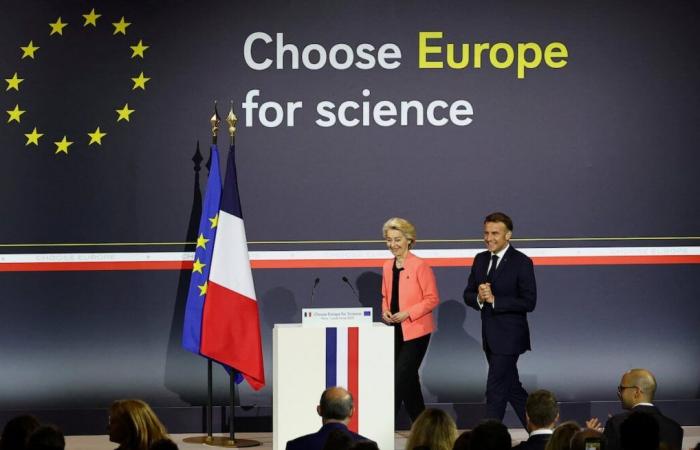Last Monday, Ursula von der Leyen, president of the European Commission, enthusiastically announced a program of 500 million euros to attract international investigators to Europe. At first glance, it looks like an ambitious figure. But let’s put it in context.
In the United States, many universities work with a model of endowment (endowment). That is, they have a large savings account that they invest to generate annual yields. Universities allocate a part of those yields (4%) to finance research, scholarships and salaries, while capital continues to grow. In this context, how big is the effort of the Choose Europe program? The 250 million annually of the program are not compared to the payments of Harvard or Yale, but with those of a slightly known university. Europe’s commitment is a little lower than the annual payment of Ohio State.
The problem is not just the size of the investment. It is also the gigantic wage gap. A starting professor at the Complutense University of Madrid earns about 35,000 euros a year. At the University of Michigan, an average professor earns $ 207,000 (about 195,000 euros). That is, in four years, an academic in Michigan charges what one in Spain would receive in two decades. The differential is abysmal. To convince a researcher who already has his laboratory and his family installed in the United States, something much more attractive must be offered than precarious contracts or three -year aid.
Spain is one of the countries that is trying to take this opportunity, and has expanded its international talent collection program, with additional 45 million euros for the next three years (Atlético de Madrid invested more than 180 million euros in transfers for the 2024/2025 season). In the past, this program has attracted 58 scientists, most of whom are Spanish citizens (59%). But, again, the program offers little certainty about what will happen to these research teams once the incentive ends. In addition, it is important to keep in mind that Spain is a country with a GDP of approximately 1.5 billion euros and a public spending of around 600,000 million a year. The effort to strengthen its academic workforce represents only 0.0025% of its annual public spending and is equivalent to the payment of the provision of an American university too small to appear on the website of the National Center for EE Education Statistics. UU. It is approximately one third of what would annually pay the endowment of the University of Alabama, which occupies the 120th place among the universities with greater endowments.
If the budget reflects the priorities, Europe is talking a lot … but investing little.
But I don’t write this just to complain. I write it to chop the pride of Europe and propose a bold alternative: create a great European research fund. A sovereign fund that invests in the long term and generates stable yields to finance top -level science in a sustained way.
-What size should it be? Imagine a fund that is an eighth part of the current European Rearme Plan (valued at 800,000 million euros). Those 100,000 million euros seem a lot, but they are approximately the combined endowment of the three best -gifted American universities, Harvard, Yale, and Stanford. Inverted to 4%, it would generate about 4,000 million annually – not for three years, but forever. That would allow to create, for example, 4,000 chairs of excellence, endowed with a million euros a year each. Each of these chairs would provide twice the support provided by the most prestigious vehicle currently in Europe, ERC projectors, which pay 2.5 million euros in 5 years (or half a million a year for the entire team of a researcher).
Another thing that Europe could do is explicitly open their academic system to teachers-entrepreneurs. Unlike the United States or China, they greatly benefit from teachers-entrepreneurs, Europe’s technological transfer system is based on the idea that companies acquire knowledge collaborating with the academic world. This leads to many meetings and events, but a few startups led by teachers. In the United States and China, the figure of the teacher-understanding is extremely common and highly celebrated. An extreme example is Bob Langer, Institute Professor at MIT, which has participated in the foundation of more than 30 different companies.
We must encourage teachers-entrepreneurs because ideas do not travel on paper, but within minds. So the academic who discovered the peptide or algorithm must participate in the company that tries to market it. That a teacher succeeds through entrepreneurship is not a misuse of public funds. It is one of the most effective vehicles through which research financing benefits the world real. A professor-entrepreneur creates numerous jobs and helps keep the economies in which he is inserted in the technological border.
And, of course, Europe must simplify its tangled bureaucracy. A shameful example in Spain is that Spanish researchers must ask for fictitious diplomas to conferences organizers to reimburse the trips to congresses. The infamous and famous “Spanish paper.”
Europe has a historical opportunity. Many researchers in the United States are more willing today than ever to move. But if we want to consider Europe, we have to get serious. Sincerely, I doubt that happens. I hope, from the heart, to show me that I am wrong.
Cesar A. Hidalgo He is director of the Center for Collective Learning at the University of Toulouse and founder of the DataWheel Technology Company.






